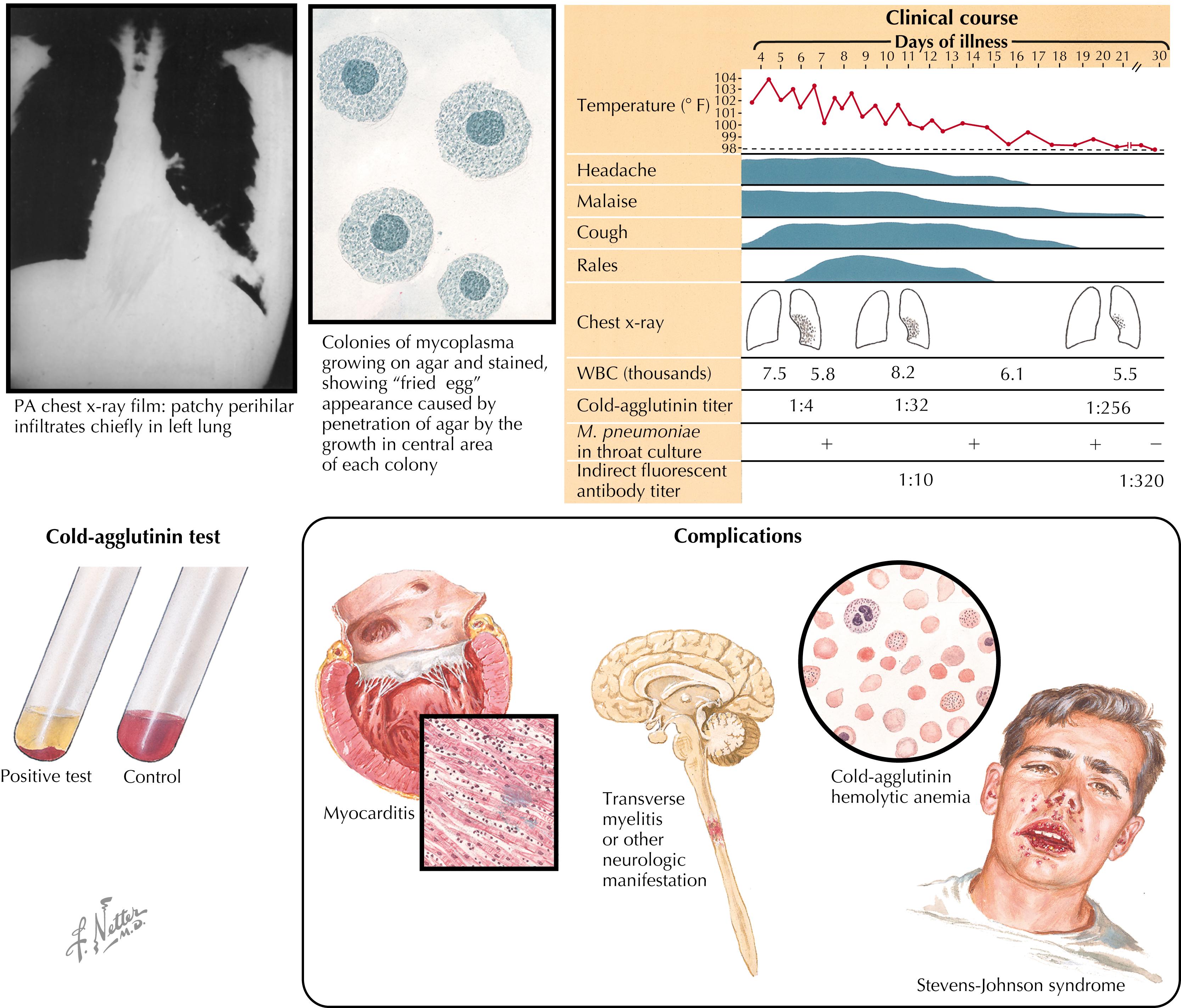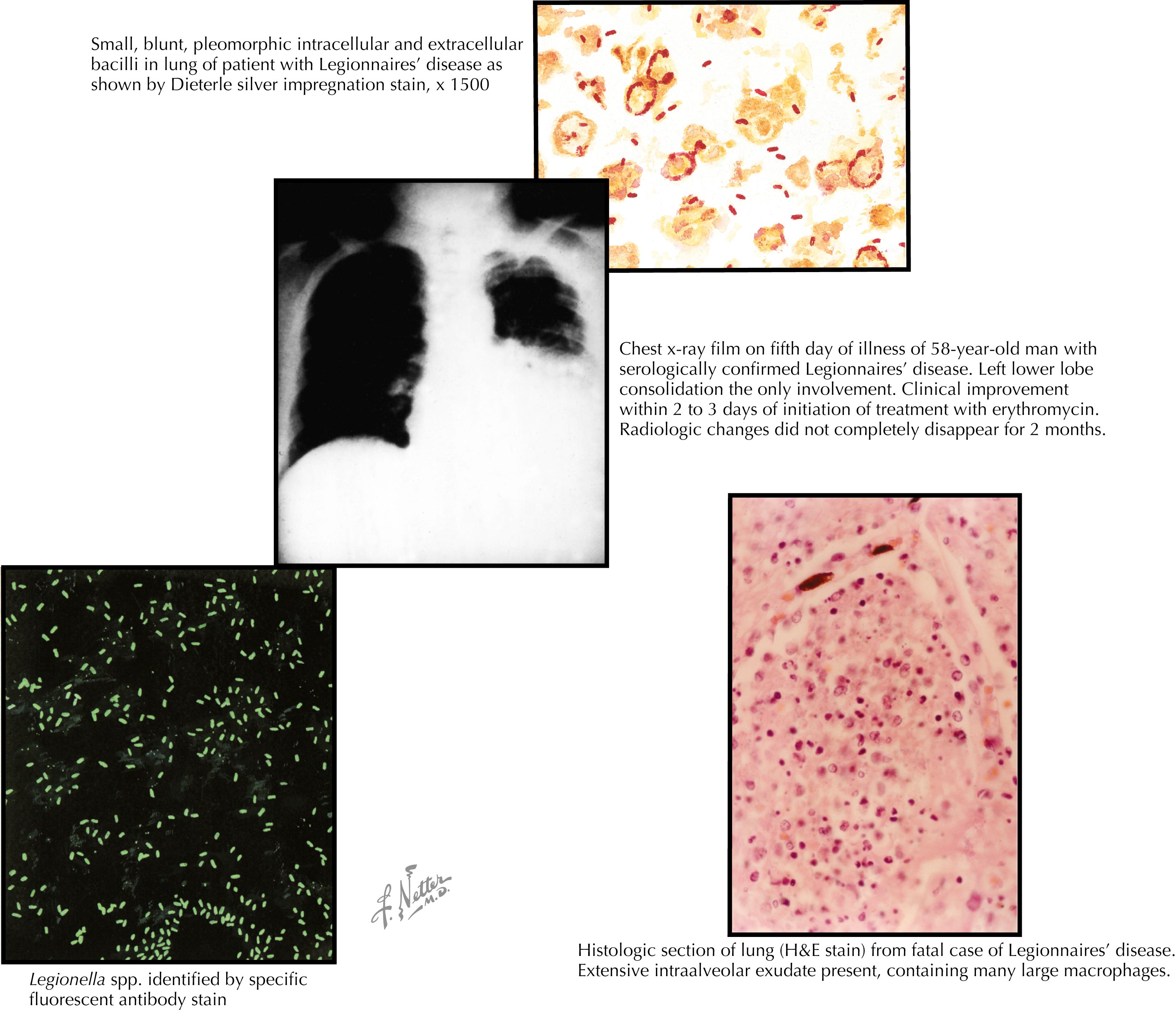Physical Address
304 North Cardinal St.
Dorchester Center, MA 02124
The term atypical pneumonia was first used more than 50 years ago to describe cases of pneumonia caused by an unknown agent(s) and that appeared clinically different from pneumococcal pneumonia. Although the original distinction between atypical and typical pneumonia arose from the perception that the clinical presentation of patients was different, recent studies have shown that there is excessive overlap with clinical manifestations from specific causes, which does not permit empirical therapeutic decisions to be made solely on this basis. Thus the scientific and clinical merit of the designation atypical pneumonia is controversial, and many authorities have suggested that the term atypical be discontinued. However, the term remains popular among clinicians and investigators and prevalent in recent literature regardless of its clinical value. Moreover, options for appropriate antimicrobial therapy for the most common causes are similar, which is considered justification by some for lumping these together.
A 68-year-old male with history of smoking and congestive heart failure presents to the emergency department with a 2-day history of fever, cough with sputum, and dyspnea. He has stage 3 chronic renal disease. He recently moved into an older home which required extensive plumbing maintenance. Exam: blood pressure (BP)-130/90; temperature 38.6°C; pulse 110; respiratory rate 24; auscultation of lungs revealed evidence of consolidation of right lung field; pulse oximetry-93%; laboratory-white blood cell (WBC)-18,000; sodium level slightly low; slight elevation of transaminases.
Atypical pneumonia was initially characterized by constitutional symptoms, often with upper and lower respiratory tract symptoms and signs, a protracted course with gradual resolution, a lack of typical findings of consolidation on chest radiograph, failure to isolate a pathogen on routine bacteriologic methods, and a lack of response to penicillin therapy. In the 1940s an agent that was believed to be the principal cause was identified as Mycoplasma pneumoniae. Subsequently other pathogens have been linked with atypical pneumonia because of similar clinical presentation, including a variety of respiratory viruses, Chlamydia psittaci, Coxiella burnetii, and Chlamydophila (also known as Chlamydia ) pneumoniae . Less common causative agents associated with atypical pneumonia include Francisella tularensis and Yersinia pestis (plague), although these agents are often associated with a more acute clinical syndrome. Finally, pneumonia caused by Legionella species, albeit often more characteristic of pyogenic pneumonia, is also included because it is not isolated using routine microbiologic methods.
M. pneumoniae, C. pneumoniae, and Legionella pneumophila are the most common causes of atypical pneumonia ( Figs. 28.1 and 28.2 ). The results of recent studies indicate that they cause from 15% to as much as 50% (in selected outpatient populations) of cases of community-acquired pneumonia (CAP). However, until recently these pathogens (with the exception of L. pneumophila ) have not often been identified in clinical practice because of lack of specific, rapid, or standardized tests for their detection. The recent availability of US Food and Drug Administration (FDA)-approved molecular testing methods will likely provide increased identification of these pathogens. The other causes of atypical pneumonia occur with much less frequency.


M. pneumoniae infections are ubiquitous and can affect people in all age groups. M. pneumoniae are extracellular pathogens that adhere to the respiratory epithelium by means of specialized protein attachments. They are unique among bacteria because they do not have a cell wall; this property renders the organism resistant to β-lactam antimicrobial agents. M. pneumoniae are transmitted from person to person by respiratory droplets with a usual incubation period of several weeks. It is estimated that only 3% to 10% of infected persons develop pneumonia. Many of the pathogenic features of infection are believed to be immune mediated rather than induced directly by bacteria (antibodies produced against the glycolipid antigens of M. pneumoniae may cross-react with human red cells and brain cells).
C. pneumoniae are very small bacteria (once considered viruses) that are obligate intracellular parasites and are unique among bacteria for their developmental cycle, forming infectious forms (elementary bodies) and noninfectious forms (reticulate bodies). Infections are often acquired early in life, and the bacteria may remain in a latent form afterward. Reinfections or recrudescent processes, both referred to as recurrent infection, may occur throughout one’s lifetime. Most adults who are hospitalized with C. pneumoniae pneumonia have recurrent infection.
Legionella species are small bacilli that have special growth requirements in the laboratory. They do not stain with common reagents but can be seen in tissues stained with Dieterle silver stain (see Fig. 28.2 ). They are intracellular organisms that are engulfed by alveolar macrophages via phagocytosis. More than 49 different Legionella species have been identified. The most common to infect humans is L. pneumophila, which contains 16 different serogroups (serogroup 1 causes most cases of infection in North America).
Legionella organisms produce virulence factors that enhance intracellular survival and growth within the macrophages; chemokines and cytokines released by the infected macrophages trigger an inflammatory response that is often severe and can lead to a rigorous influx of neutrophils within the alveoli (see Fig. 28.2 ). Legionella is not spread person to person but usually by exposure to water. Outbreaks may be associated with infected water sources. The incubation period is 10 days.
Although the diagnosis of these specific pathogens is difficult to establish on clinical manifestations alone, there are several generalizations that may be helpful to the clinician in considering these infections.
Become a Clinical Tree membership for Full access and enjoy Unlimited articles
If you are a member. Log in here